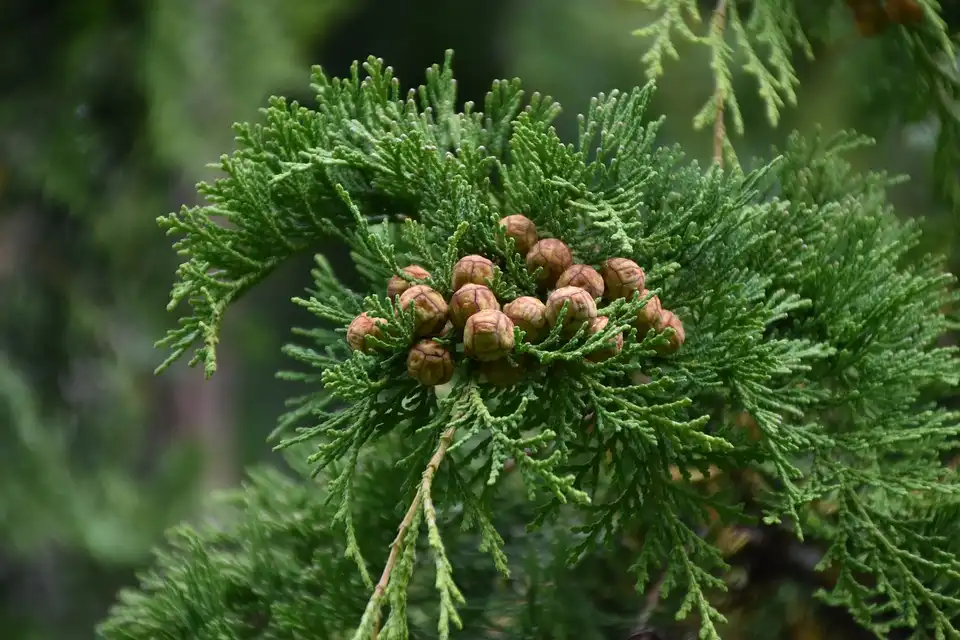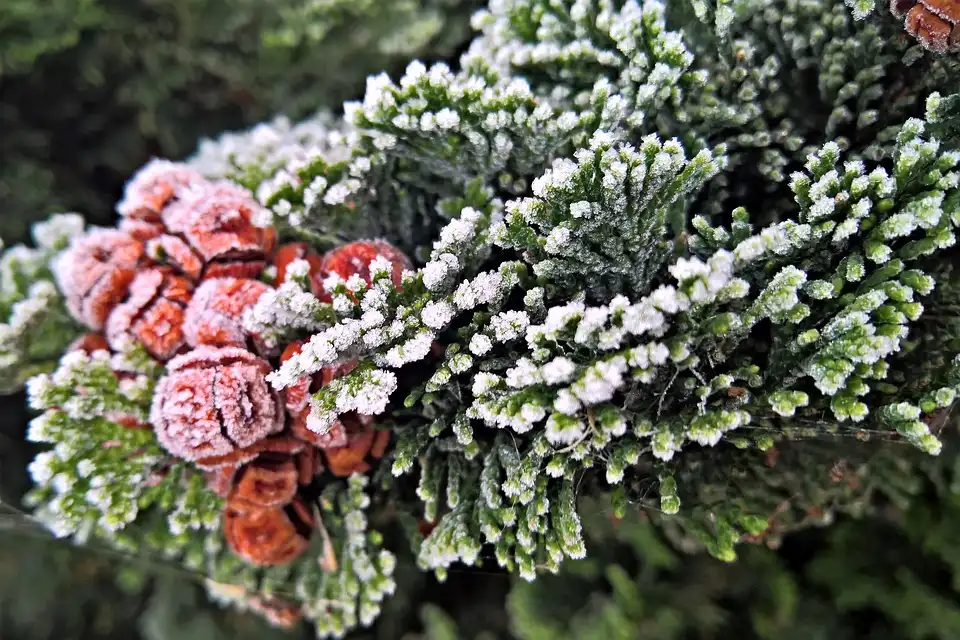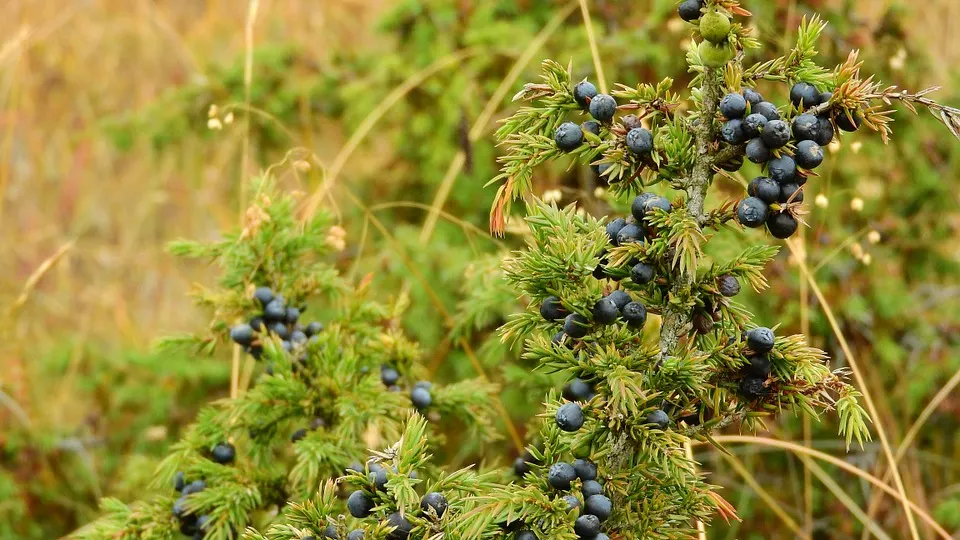What Does a Juniper Tree Look Like? Juniper Identification Guide
Junipers are among the most diverse naturally occurring aromatic tree species in the Northern hemisphere. Ideally suited to thriving in numerous different climates, Junipers are also incredibly hardy and easy to grow.
Juniper trees stem from the family Cupressaceae, more commonly known as the cypress family of the order Pinales. One of 30 genera and 133 species of ornately ornamental evergreen trees in the cypress family, Junipers can be grown as timber shrubs, full-size trees, and even bonsais.
With so much versatility within the Juniperus genus, it’s no wonder they can sometimes be a little tricky to identify. By the end of this article, we’ll have covered enough ground for you to know exactly what to look for. Who knows, you might have one of these beauties in your own backyard.
How To Identify a Juniper
Junipers pop up in the most stunning colors. Breaking away from the usual wintery greens of other coniferous trees, Junipers occur in vibrant cool shades of blue and even warmer colors like bronze and almost luminous shades of gold.
Like most conifers, young Juniper leaves are rough and prickly like little needles when they first shoot. As they age and grow, they get softer and flourish into mature lush scale-like foliage. Junipers’ growing habits vary from species to species, with some being droopy and others opting to grow proud, tall, and upright.
Sizing is also incredibly diverse within the Juniperus genus. Some Junipers stay small, only growing to around six inches, while others can reach wondrous heights of 130 feet. Junipers’ thick, lush foliage can spread quite far depending on the size of the tree, with some spreading their branches as wide as 25 feet.
Because they sometimes get so tall, Junipers make excellent windbreaks in places where strong gusts of wind tend to batter the landscape with tremendous force. Ideally suited for cold, gusty climates, planting Junipers in generous rows around your property can also provide natural privacy without sacrificing the presumably jaw-dropping views with unsightly walls and fences.
As you can see, Junipers are a diverse group of trees that bear many similarities to other coniferous trees. The best way to learn how to tell a Juniper apart from other conifers is to delve deeper into the various species.
Types of Junipers
Below we’ll take a closer look at a few specific types of Juniper trees ranging from the common to the far rarer.
Eastern Red Cedar – Juniperus Virginiana
Eastern Red Cedar is a species of Juniper native to the eastern regions of North America. It features fibrous brown bark with a reddish tint that peels off in narrow strips. This species of Juniper has olive-green foliage that sometimes has hints of yellow toward the tips of the leaves. Their berries range from the deepest shades of purple to almost pure black, with a distinct icy-white surface residue that makes them as though they’ve been frozen.
While there are separate male and female plants, like most Junipers, Eastern Red Cedar’s are mostly hermaphroditic. This means that most trees boast both the cones that shed pollen and the softer seed cones that mature into fleshy blackberries. Mature Juniper berries are the very same dark jewels that give Gin its signature herbaceous pine notes.
Eastern Red Cedar is also known as a pioneer species, which means it is usually one of the first trees used to repopulate eroded, cleared, or damaged land parcels. Another interesting use for Eastern Red Cedar is an alternative host for cedar-apple rust, a particularly pesky fungal disease that attacks apple groves. The fungus usually chooses to prey on the Juniper trees instead of the apple trees, so the quality of the apple groves is protected.
California Juniper – Juniperus California
As the name suggests, this species of Juniper is native to southwestern North America, where California was established. California Juniper is a relatively small tree, reaching 3 to 8 meters on average. It has thin, delicate bark that has a shredded look and is usually ash-grey. While it’s a small, slender tree, the shoots of the California Juniper are surprisingly thick compared to other species.
The foliage of the California Juniper is an eye-catching blue-grey with the classic groupings of three where the scaly leaves are concerned. California Juniper also has berries that adorn the foliage of the female variety. They differ from those of other species, however. The berries on the California Juniper look are fleshy whispers of light blue or muted browns with the signature white surface coating. With foliage and bark this beautiful, it’s surprising that more people dont opt for Juniper trees or bonsais instead of the classic green suburban tree varieties.
Blue Star Juniper – Juniperus Squamata
This has to be one of the prettiest shrubs to adorn garden beds and rockeries. Blue Star Juniper is a small evergreen shrub that grows in the most captivating shades of silvery blue. Standing around 3 feet tall once mature and equally wide, Blue Star’s tightly packed foliage almost has a holographic effect. The closer you stand to this delightful little shrub, the greener it looks. Take a few steps back, however, and you’ll be graced with the light muted blues and silver accents that give this shrub its name.
Blue Star is also perfect for a low-maintenance garden like a rockery because it is easy to grow and dont require excessive water once they’re established. Their silvery-blue foliage also pairs beautifully with shrubs that grow in various shades of yellow and gold. The following variant is the perfect companion plant for Blue Star.
Dwarf Juniper Gold Tip – Juniperus Squamata ‘Floreant’
This species’ name is quite a mouthful, and rightfully so. Gold Tip is one of the most striking varieties of Juniper. With its gold-tipped leaves, Juniperus Squamata ‘Floreant’ is perfect for potting or planting anywhere its vibrant foliage can be properly enjoyed.
Its variegated foliage is a delightful addition to any garden and can be used to add gradients, depth, and more visual interest to your shrubbery. As a dwarf species, Dwarf Juniper Gold Tip stays manageable and small at between 6 inches and 2 feet.
Redberry Juniper – Juniperus Pinchotii
Redberry Juniper is another smaller variety of the magnificent Juniper tree. Reaching an average height of around 20 feet, these magnificent trees boast seed cones or berries in alluring shades of deep red to copper. These berries are sweet, juicy, and not resinous like other Juniper berries.
The foliage of the Redberry Juniper is fairly ordinary as far as Junipers go. However, the combination of scale-like leaves and needles always leaves Junipers on the more spectacular side of the natural world, no matter if their foliage is the usual deep shade of green coniferous trees are known for.
Redberry bark is a muted shade of grey and relatively smooth but does come off in flakes. Like most Juniper varieties, Redberry wood is delightful to burn. While it gives off very little visible smoke, it’s far more aromatic than the smoke of other types of wood. Historically Redberry wood was used alongside Ashe Juniper Wood to cleanse vast temples. The smoke from both varieties is also said to aid clairvoyance abilities. With this in mind, burning small pieces of Redberry and Ashe in a decorative bowl while you meditate might help align your chakras.
Juniper Bonsais
Fun fact, Junipers also make the perfect bonsais. Juniper is one of the few bonsai trees that can be placed either outdoors in the sun or indoors. While numerous varieties of Juniper trees can be cultivated into bonsais, the most popular choice is Juniperus Chinesis, Chinese Juniper.
One of the aspects of Chinese Juniper that make it a favorite for horticulturalists and bonsai enthusiasts is the flexibility of its branches. It is a highly trainable tree and relatively easy to shape; therefore, Juniper might be the best place to start if you’re looking to try your hand at bonsai nurturing.
The wiring technique is a particularly well-suited method of shaping and training Juniper bonsais to grow in the desired fashion. Juniper bonsais are very adaptable trees. They will adapt well to most environments, provided that they get watered regularly. 
Final Word
Juniper is one of the most richly diverse tree species in the world. Growing naturally in many shades of vibrant greens, blues, and golds, these trees indeed are the perfect addition to any garden. Whether you have a massive backyard or a small curbside garden bed, numerous Juniper species would be ideal. With its beautiful, aromatic wood and sweet, versatile berries, there may not be another tree quite as impressive as the awe-inspiring Juniper.







